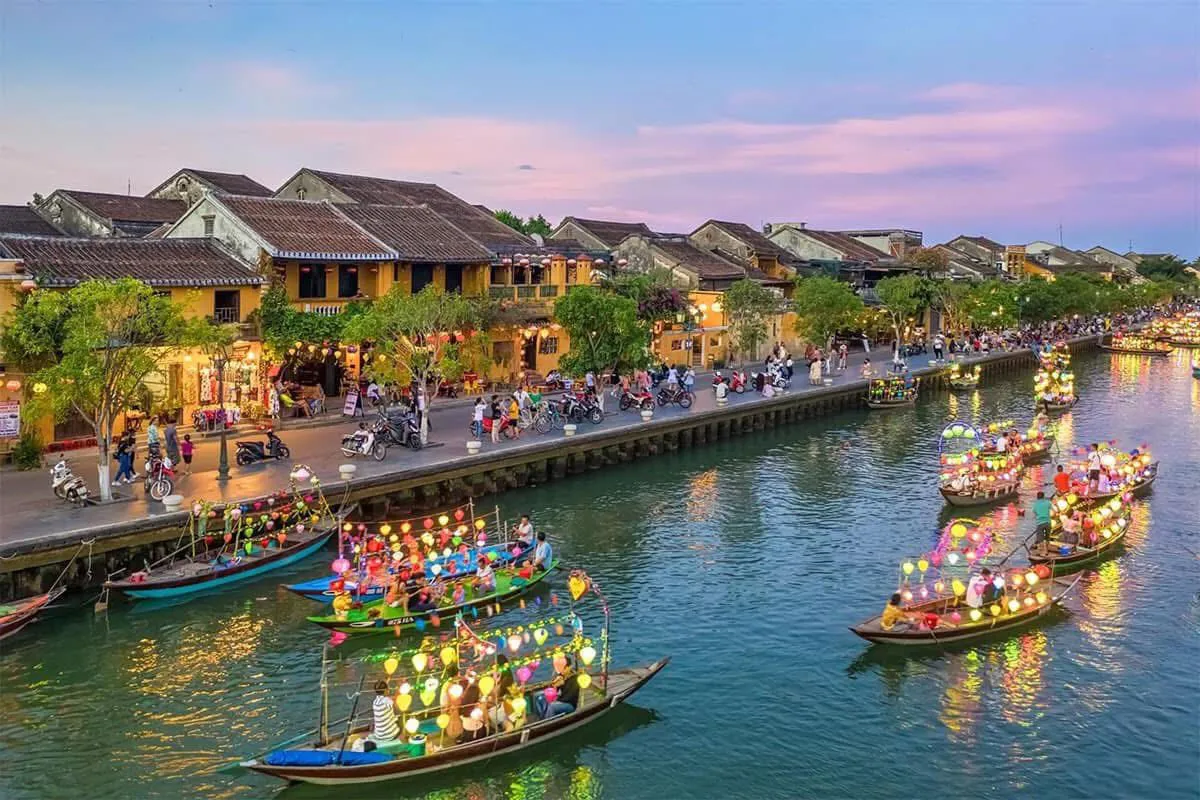Territorial reorganization stimulates Vietnam's tourism
Travel experts forecast that the merger of provinces would help the Vietnamese tourism sector to restructure, build brands, and achieve sustainable development.
Hoang Linh, a tour guide from Hanoi, could hardly contain her excitement upon hearing that Ha Nam and Nam Dinh provinces would merge administratively with Ninh Binh. This change, she believes, will shine an even brighter spotlight on the northern delta’s fertile lands, making the region increasingly popular with tourists.

The Mua (Dance) Cave in Ninh Binh Province. Photo: Check-in Vietnam
“Ninh Binh is already renowned for its breathtaking destinations like Tam Coc - Bich Dong and the Trang An Scenic Landscape Complex, a UNESCO World Heritage Site,” she said. “With the addition of new attractions such as the Tam Chuc Spiritual Tourism Area and Dia Tang Phi Lai Tu Pagoda, the region will become even more appealing. And let’s not forget the famous local treats like Siu Pao and Gai cakes,” she added.
The fact is that the reorganization of the 63 provinces and cities into 34 to take effect on July 1, 2025, will open up strategic restructuring opportunities for the tourism industry, according to Nguyen Manh Than, Chairman of the Hanoi Tourism Association (HTA).

Phu Quoc Island boasts dreamlike beauty. Photo: Hong Nhi
New tourism brands anticipated
Specifically, there will be smooth collaboration among localities in managing tourism resources, connecting well-organized tours and routes, creating a sustainable, uninterrupted tourism value chain.
Dr. Trinh Le Anh of the Faculty of Tourism Studies at the University of Social Sciences and Humanities at Vietnam National University in Hanoi agreed with this assessment. He said that the merger is an opportunity for many localities to restructure their tourism development strategy and open up inter-regional tours, with each locality serving as a link.
"Vietnam can expect a synchronized tourism industry offering novel experiences as the post-merger provinces renew their brands. For instance, tourists coming to Lam Dong Province will not only experience the Central Highlands' mountains and forests, but also have more opportunities for sea tourism,” Dr. Anh gave an example.
Sharing this view from the perspective of enterprises, HTA Vice Chairman Nguyen Tien Dat said that the merger would allow the tourism sector to innovate products harmoniously.

Hoai River in Hoi An Ancient Town, Quang Nam Province, Vietnam. Photo: Tran Phu
"After Hai Duong and Haiphong merge, those running the Con Son - Kiep Bac - Cat Ba tour won't need permission from two subnational governments anymore. Similarly, when Lam Dong, Binh Thuan, and Dak Nong become one province, a tour titled 'Dreamy Dalat, Blue Mui Ne Sea, and Ta Dung Jungle' could span five to six days, taking tourists from foggy landscapes to sunny, windy beaches and into old forests, offering a comprehensive and reasonable journey," Dat explained.
Brand promotion
To prevent tourists from being confused by new place names following the merger, the tourism industry and localities are encouraged to promote and position brands more effectively.
According to Lux Group Chairman and CEO Pham Ha, the tourism sector has often focused on promoting localities' names, but what captivates tourists is the uniqueness of each destination. Those who love nature and islands need a green, clean, and beautiful place with lovely beaches and good services and care little about administrative boundaries. Therefore, in the future, localities should shift from promoting localities to promoting destinations.

A corner of Ba Na Hill in the central coastal city of Danang, Vietnam. Photo: Dong Thai
Furthermore, local authorities should work closely with businesses to improve traffic systems and market inter-regional tourism products created after the merger.
Pham Truong Hoang of the National Economics University shared this opinion, believing that a tourism brand is truly sustainable only when it lives in the hearts of the people and spreads outward from there. Locals will be the “brand ambassadors” who introduce destinations to tourists, even if the names are different. However, this requires the tourism industry to listen to locals when planning, designing products, and making policies.
Flamingo Redtour CEO Nguyen Cong Hoan stated that the merger requires the tourism industry and localities to redesign their communication strategies and tourism maps to guide tourists and businesses. During the transition period, both the old and new toponyms should be used so that tourists can gradually become accustomed to the changes without losing connection to the old brands.

Ha Long Bay, Quang ninh Province, Vietnam. Photo: Grand Pioneers Halong Bay Cruise
Moreover, promoting destinations on social networking platforms, search engines, and digital maps will ensure that tourists can easily access information despite the name changes.
Dong Thi Ngoc Anh, Deputy General Director of Sun Group, echoed the idea, suggesting that in the near future, the Vietnam National Tourism Authority (VNAT) strengthen its linkages with the Ministry of Foreign Affairs to organize familiarization (FAM) trips for travel agency representatives and international journalists to experience Vietnamese tourism.
These activities will spread the image of Vietnam's landscapes and people widely around the world. At the same time, local foreign press channels should be mobilized to convey messages and images of Vietnamese tourism.
VNAT Deputy Director General Ha Van Sieu noted that, to develop effective post-merger tourism promotion solutions, tourism businesses and associations must pay special attention to market research.

The cherry blossom season in Ha Giang Province in the northwest region of Vietnam. Photo: Anh Tuan
Currently, many international visitors come to Vietnam as independent travelers, so new approaches and marketing tools tailored to this group are needed, especially on digital media platforms.
In the coming time, businesses and localities should organize promotional activities abroad annually to create breakthroughs with investment and launch at the national level.
At the same time, it’s important to diversify market access and optimize integrated marketing communication, including online and direct tools, to position destination brands, local experts said.








